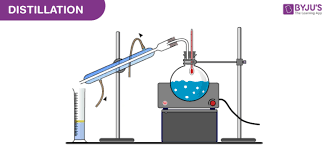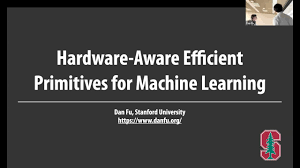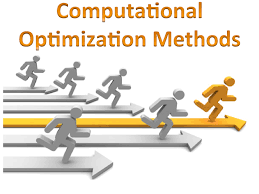comprehensive guide to Optimizing Deep Learning for Resource-Constrained Systems: Techniques and Strategies 2024
As machine learning and deep learning continue to evolve, the demand for high-performance models grows. However, deploying these models on resource-constrained systems, such as embedded devices or mobile platforms, presents unique challenges. These systems often have limitations in memory, compute power, and energy availability, making it necessary to develop optimized techniques that can make deep learning models work effectively in such environments.
In this blog, we will explore various optimization strategies to make deep learning more efficient for resource-constrained systems, including network modifications, computational optimizations, quantization, pruning, distillation, and hardware-aware learning.
Challenges of Resource-Constrained Systems
Resource-constrained systems, such as embedded devices and edge AI platforms, face several challenges:
- Real-time Requirements: Many applications, such as autonomous vehicles or industrial IoT systems, require real-time processing with minimal latency.
- Memory Limitations: Devices like smartphones, IoT sensors, and edge devices often have limited memory, which makes storing large models difficult.
- Energy Budget: Power consumption is a critical factor for battery-powered devices, requiring energy-efficient models.
- Variable Resource Availability: The available compute and memory may fluctuate based on the system’s workload or environmental conditions.
Addressing these challenges requires specialized techniques that reduce computational complexity without compromising model performance.
Strategies for Optimizing Deep Learning Models
1. Network Modifications

Modifying network architectures is one of the most effective ways to reduce the memory and computation costs of deep learning models. Some common strategies include:
- Sparsity and Pruning: Removing unimportant neurons or weights (pruning) from the model reduces its size and computational overhead. This technique can be applied to both the weights of fully connected layers and convolutional layers, leading to significant memory savings.
- Channel Pruning: By eliminating entire channels in convolutional layers, we reduce the number of operations needed during inference. This method is effective for both memory reduction and runtime optimization.
- Grouped Convolutions: Grouped convolutions split convolutional operations into smaller groups of filters, which helps reduce the computation while maintaining the accuracy of the model.
2. Quantization
Quantization is a technique that reduces the precision of the numbers used in the model (e.g., from 32-bit floating point to 8-bit integers). This reduces both the memory footprint and the computational load, leading to faster inference and lower energy consumption.
- Low Precision Inference: Techniques like FP16, BF16, and INT8 are used to reduce the precision of operations during inference, making them more efficient. Quantization, when properly applied, can speed up inference without causing a significant accuracy drop.
- Quantization-Aware Training: This approach incorporates quantization during the training process, allowing the model to adapt to the lower precision representation. This results in models that maintain higher accuracy after quantization.
3. Distillation

Distillation is a model compression technique where a larger teacher model is used to train a smaller student model. The student model learns to mimic the behavior of the teacher model while being more compact and efficient.
- Attention Transfer: In this approach, the attention maps generated by the teacher model are transferred to the student model, allowing the student to learn important features that improve performance while using fewer resources.
- Moonshine Distillation: A method of distillation that uses cheap convolutions to distill knowledge from larger models into smaller ones, preserving performance with reduced complexity.
4. Hardware-Aware Learning

Hardware-aware learning involves designing and training models with knowledge of the target hardware platform. This approach optimizes both the model and its deployment to achieve better performance.
- Efficient Decompositions: Linear decomposition methods like Tensor-Train, Tucker, and HashedNet break down complex operations into simpler ones, reducing the computational burden and making models more hardware-efficient.
- Bottleneck and ACDC: By identifying bottlenecks in the model, we can apply methods like ACDC (Adaptive Computation for Deep Learning) to reduce complexity where it’s not needed, optimizing the model for specific hardware constraints.
5. Computational Optimizations

Optimizing the computation flow in deep learning models is critical for ensuring that resource-constrained systems can run them efficiently. This can be done through:
- Optimal DNN Primitive Selection: Choosing the best deep neural network (DNN) primitives for a given task allows the model to execute operations more efficiently, especially on devices with specialized hardware like GPUs and TPUs.
- Parallelization: Leveraging parallel computing frameworks (like CUDA for GPUs) helps balance workloads between cores, reducing execution time and improving overall performance.
Integrating Multiple Optimization Techniques
To achieve optimal performance on resource-constrained devices, it is essential to combine multiple techniques across the entire deep learning stack. This might include:
- ML Compression: Combining quantization, pruning, and distillation to compress deep learning models while maintaining accuracy.
- Cross-Layer Optimization: Optimizing not just individual layers but the entire network architecture for hardware-specific performance.
- Distributed Computation: Using distributed systems like multi-GPU or multi-CPU setups to split the workload and speed up computation.
Conclusion: Optimizing Deep Learning for the Edge
Deep learning models can be computationally expensive and memory-intensive, making them challenging to deploy on resource-constrained systems. However, with the right optimization techniques—such as network modifications, quantization, pruning, distillation, and hardware-aware learning—it’s possible to make these models both efficient and effective.
By leveraging the power of modern computational optimizations and applying them strategically to deep learning workflows, it’s possible to scale AI applications on embedded systems, mobile devices, and edge computing platforms. These techniques enable us to unlock the potential of AI in environments where resources are limited, leading to faster, more efficient, and more scalable deep learning models for real-world applications.